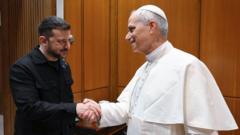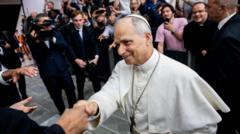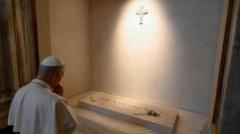*Papal elections at the Vatican follow a centuries-old tradition of signaling the outcome with colored smoke, a practice that is steeped in history and cultural significance.*
**The Smoke Signals of Papal Elections: A Visual Tradition from Vatican City**

**The Smoke Signals of Papal Elections: A Visual Tradition from Vatican City**
*Understanding the historical significance and modern implications of the smoke signal tradition during papal conclaves.*
As the cardinals gather in the Sistine Chapel to elect a new pope, the world’s gaze turns towards the chimney rising above the chapel. This tradition, used since the 19th century, employs colored smoke to indicate the outcome of the voting process. A plume of white smoke signifies that a new pope has been elected, while black smoke indicates that no candidate has secured the required two-thirds majority.
This practice of using smoke traces back to the early 1820s, as outlined by Frederic J. Baumgartner in his book “Behind Locked Doors”, which chronicles the history of papal elections. While prior conclaves involved the burning of ballots, it was not initially intended as a method of communication with the outside world. The smoke arises from burning the ballots themselves, as well as notes from the cardinals, which are all placed in a cast-iron stove following each round of voting. Traditionally, on the first day, there is one round and thereafter, four rounds per day, split between two sessions in the morning and afternoon.
Changes in the process over the years reflect advancements in signaling reliability. Until the 21st century, the tradition of adding wet straw to enhance the smoke's white color often led to confusion. One notable incident occurred in the 1958 conclave when white smoke appeared falsely during voting, leading many to believe a pope had been chosen prematurely.
As the world awaits the choice of the new leader of the Catholic Church, the colored smoke continues to serve as a powerful symbol of the deep-rooted legacy surrounding the papal election process.




















